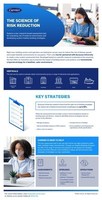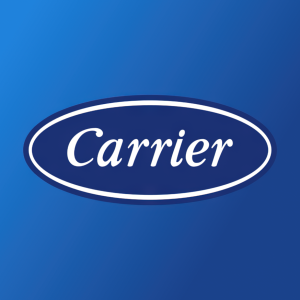New Research Shows Building Strategies Can Reduce Risk of Airborne Transmission of Pathogens by up to 80%
Rhea-AI Summary
Carrier Global Corporation has collaborated with Syracuse University to develop an assessment tool aimed at reducing airborne pathogen transmission in buildings. This new tool leverages research indicating that customized mitigation strategies can lower risks by up to 80% through various tactics, including improved ventilation and air filtration. The study utilized the Wells-Riley equation to estimate baseline risks associated with SARS-COV-2. Carrier continues to implement innovative solutions, reinforcing its commitment to healthier indoor environments.
Positive
- Development of a tool to assess and reduce airborne pathogen transmission.
- Custom strategies can reduce airborne transmission risk by up to 80%.
- Collaboration with reputable institutions enhances Carrier's credibility.
Negative
- None.
News Market Reaction 1 Alert
On the day this news was published, CARR declined 1.57%, reflecting a mild negative market reaction.
Data tracked by StockTitan Argus on the day of publication.
PALM BEACH GARDENS, Fla., Jan. 25, 2021 /PRNewswire/ -- Following new research from Syracuse University showing the effectiveness of building systems to mitigate airborne transmission of pathogens in buildings, Carrier Global Corporation and Syracuse University have co-developed an assessment tool that can evaluate buildings for airborne pathogen transmission risk and provide custom strategies to help ensure healthier and safer environments for building occupants. Carrier Global Corporation (NYSE: CARR) is a leading global provider of healthy, safe and sustainable building and cold chain solutions.
The research with Syracuse University's College of Engineering and Computer Science assessed how effective different mitigation strategies are in reducing the risk of transmission airborne pathogens in buildings. Specifically, the study evaluated individual components in buildings and how they work together. Results showed that customized, layered mitigation strategies can reduce the risk of airborne transmission of pathogens by up to
In the study, Syracuse University estimated virus generation rate based on published case studies for SARS-COV-2 outbreaks, defined the baseline space conditions for different type of buildings, and then applied the widely adopted Wells-Riley equation to estimate the baseline risks.
"Applying this aggregated data and risk calculation, we then quantified the potential for reducing airborne transmission risk by using various indoor air quality control strategies including source control, ventilation and air cleaning," said Syracuse University mechanical and aerospace engineering Professor Jensen Zhang. "It is encouraging to know that significant risk reduction can be achieved."
"Our new assessment tool provides a new and innovative way for Carrier experts to examine individual components in buildings and how they work together, to recommend a layered strategy that ultimately reduces risk of airborne transmission of pathogens," said Rajan Goel, senior vice president, Carrier Building Solutions Group and leader of Carrier's Heathy Buildings Program. "The tool provides us a very effective mechanism for improving our customers' overall indoor air quality and efficiency."
Carrier has a legacy of working with leading institutions to advance the body of knowledge. Most recently, Carrier worked with the University of Colorado Boulder to examine ventilation rates in K-12 classrooms and found that
To learn more about scheduling a building assessment, visit Corporate.Carrier.com/HealthyBuildings to contact a Carrier Healthy Buildings expert. Carrier's Healthy Buildings Program and its solutions can help assess, operate, maintain and upgrade buildings to help protect what's most important – the health of those inside.
About Carrier
As the leading global provider of healthy, safe and sustainable building and cold chain solutions, Carrier Global Corporation is committed to making the world safer, sustainable and more comfortable for generations to come. From the beginning, we've led in inventing new technologies and entirely new industries. Today, we continue to lead because we have a world-class, diverse workforce that puts the customer at the center of everything we do. For more information, visit www.Corporate.Carrier.com or follow us on social media at @Carrier.
Contact: | Danielle Canzanella |
860-221-8457 | |
![]() View original content to download multimedia:http://www.prnewswire.com/news-releases/new-research-shows-building-strategies-can-reduce-risk-of-airborne-transmission-of-pathogens-by-up-to-80-301213952.html
View original content to download multimedia:http://www.prnewswire.com/news-releases/new-research-shows-building-strategies-can-reduce-risk-of-airborne-transmission-of-pathogens-by-up-to-80-301213952.html
SOURCE Carrier Global Corporation








